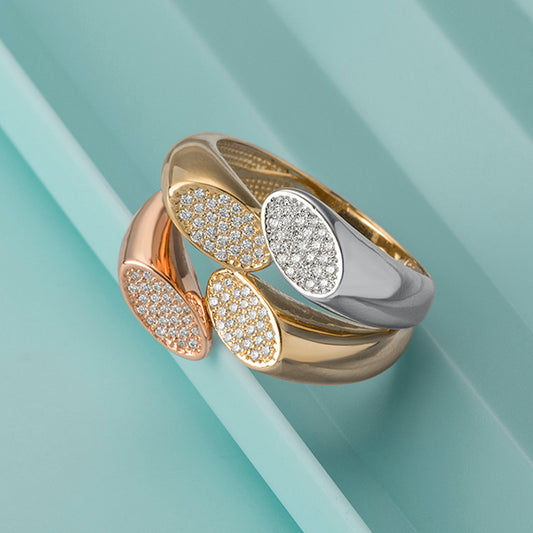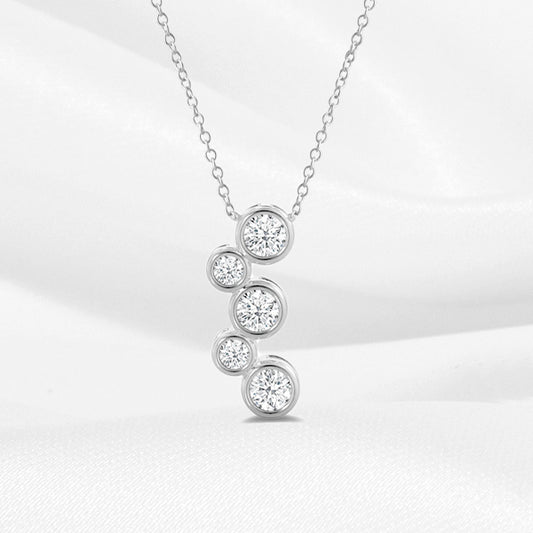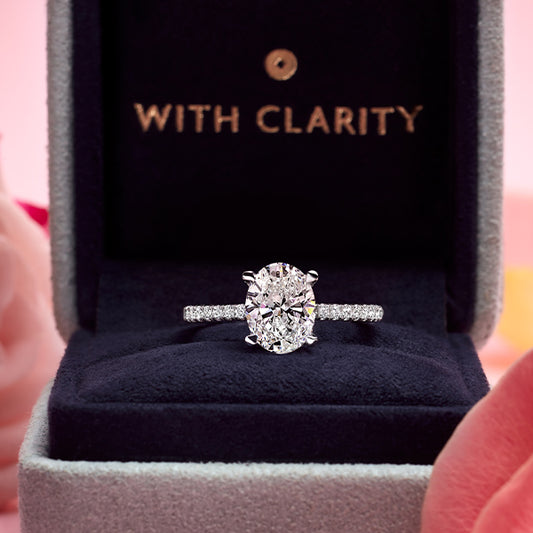Cushion Cut vs Princess Cut Diamonds

A diamond’s cut is one of the most important factors in selecting a diamond because it dictates the stone’s ability to refract light and create its signature sparkle. While there are numerous diamond cuts, the cushion cut vs princess cut debate is one of the most popular.
Cushion cut diamonds
Styled after the “old mine cut” which originated in the 1700s, the cushion cut is one of the oldest diamond cuts. Akin to the ubiquitous popularity of round diamonds in the modern day, cushion diamonds were the standard in diamond shapes until the late 19th century. This cut was termed the “old mine cut” because it mimicked the shape of diamond rough from the original Brazil diamond mines, before most diamond mining moved to South Africa. Cushion diamonds have curved sides and either rounded or pointed corners with four or eight mains--kite-shaped facets between the girdle and the culet.
Although the classic cushion diamond is square, the most popular shape is a slight rectangle with a 1.10 – 1.20 length-to-width ratio. When shopping for a cushion diamond, be mindful of its unique characteristics. While the diamond should have a symmetrical outline, it’s typical for the girdle of a cushion diamond to vary in thickness. If the girdle is extremely thin, cushion diamonds can be prone to chipping. In order to deter chipping, consider a bezel—instead of prong—setting to protect the diamond’s girdle. In addition, while cushion diamonds are extremely beautiful, the nature of a cushion cut does not afford it the same sparkle as a round brilliant or princess diamond.
When it comes to selecting a setting, cushion diamonds are extremely versatile. The sleek symmetry of a cushion diamond makes it perfect for modern settings while its rich history makes it a stunning choice for classic or antique settings. Its soft, romantic cuts also do well in solitaire, halo, and side-stone settings. And because cushion cuts retain their natural color better than most other diamond cuts, they are a great choice for diamonds outside the typical D-to-Z color range.
Princess cut diamonds
Created by Arpad Nagy in 1961 and popularized by Betazel Ambar and Israel Itzkowitz in 1980, the princess diamond cut is arguably the second most popular diamond cut. Princess diamonds are typically square in shape, with more square (as opposed to rectangular) shapes being more expensive. Compared to round diamonds, both princess and cushion diamonds are considered more affordable because they more closely mimic the natural shape of a rough diamond, allowing the polished diamond to retain more of its original weight.
In terms of light refraction, princess diamonds are a happy medium below round diamonds and above cushion diamonds. Although no diamond cut can refract all its captured light, the round brilliant cut is the industry standard definition of 100%, while the princess diamond has a refractive quality of 70% and the cushion diamond, 60%. In the cushion diamond vs. princess diamond debate, both diamonds can be considered quite fragile. Similar to the cushion diamond’s slim girdle, the sharp corners of princess diamonds can be prone to chipping and snagging on fabric. The stunning princess diamond cut is perfect for more complex ring designs such as channel, floral filigree, cushion princess settings, and elaborate vintage designs. Princess diamond engagement rings are also popularly seen in three stone arrangements.
Need to take your mind off the difficult cushion vs princess diamond decision? Explore some of our stunning ring settings, many of which can accommodate both cushion diamonds and princess diamonds.
Cathedral Twist Diamond Engagement Ring
The cathedral head of this ring cradles the diamond, allowing more light to shine through the diamond. This light-optimizing design is perfect for cushion and princess diamonds that many need a little extra light to enhance their sparkle.
Trellis Princess Solitaire Diamond Engagement Ring
This stunning trellis solitaire engagement setting is designed specifically to showcase princess diamonds.
Double Row Diamond Engagement Ring
Complement a cushion or princess diamond with two rows of stunning pave set diamonds, lining the upper half of this petite setting.
Twisting Vine Diamond Engagement Ring
This mesmerizing twist of metal and accent diamonds perfectly showcase a cushion or princess diamond.
Floating Halo Princess Diamond Engagement Ring
This halo setting with large accent diamonds is perfect for those eyeing a magnificent princess engagement ring.
Cushion Plain Shank Halo Diamond Engagement Ring
This setting features a delicate plain shank and diamond halo that allows your cushion diamond to truly shine.
Cushion Halo Braided Pave Diamond Engagement Ring
A unique twisting diamond braid weaves up as an elegant setting for the center cushion diamond.
Braided Row Diamond Engagement Ring
Braided rows of dazzling accent diamonds serve as a perfect complement for both cushion and princess diamonds.
Coil Accent Diamond Engagement Ring
Accent diamonds create a line down your brand as the metal rolls and twists, creating a ravishing backdrop for a princess or cushion diamond.
Two Tone Split Shank Diamond Engagement Ring
This gorgeous bypass-style ring is lined with a third of a carat of diamonds and available in one or two tones of metal. Perfect for cushion or princess diamonds.












